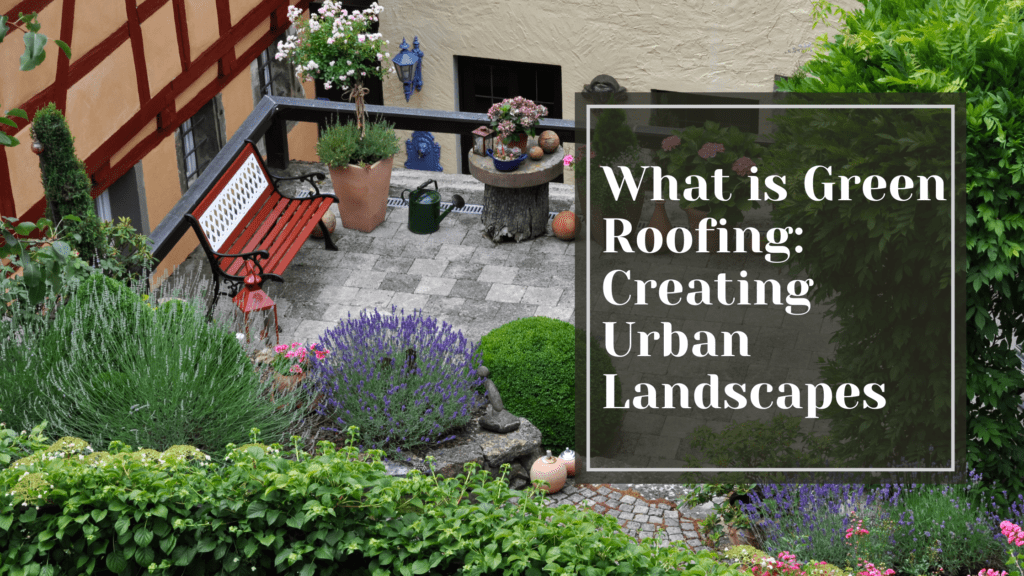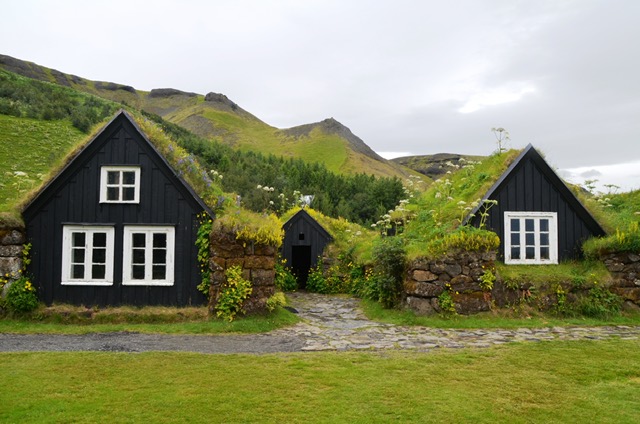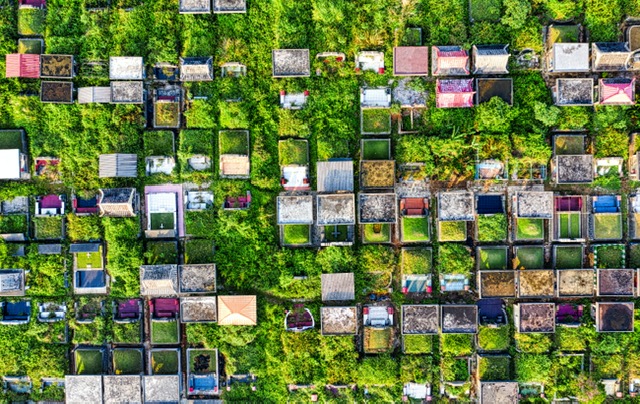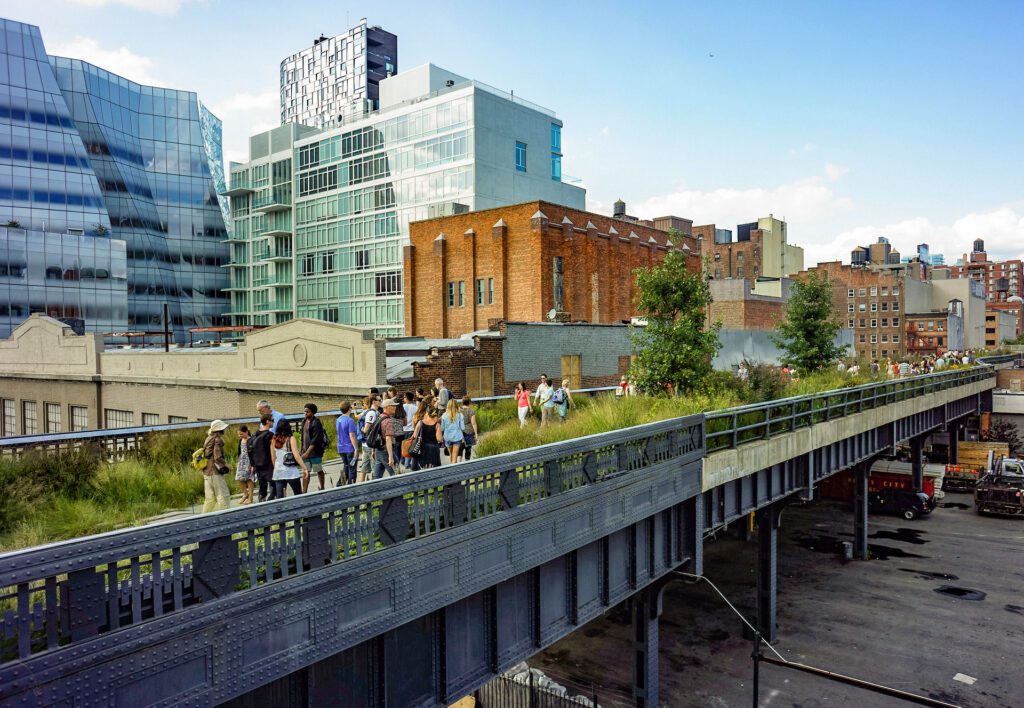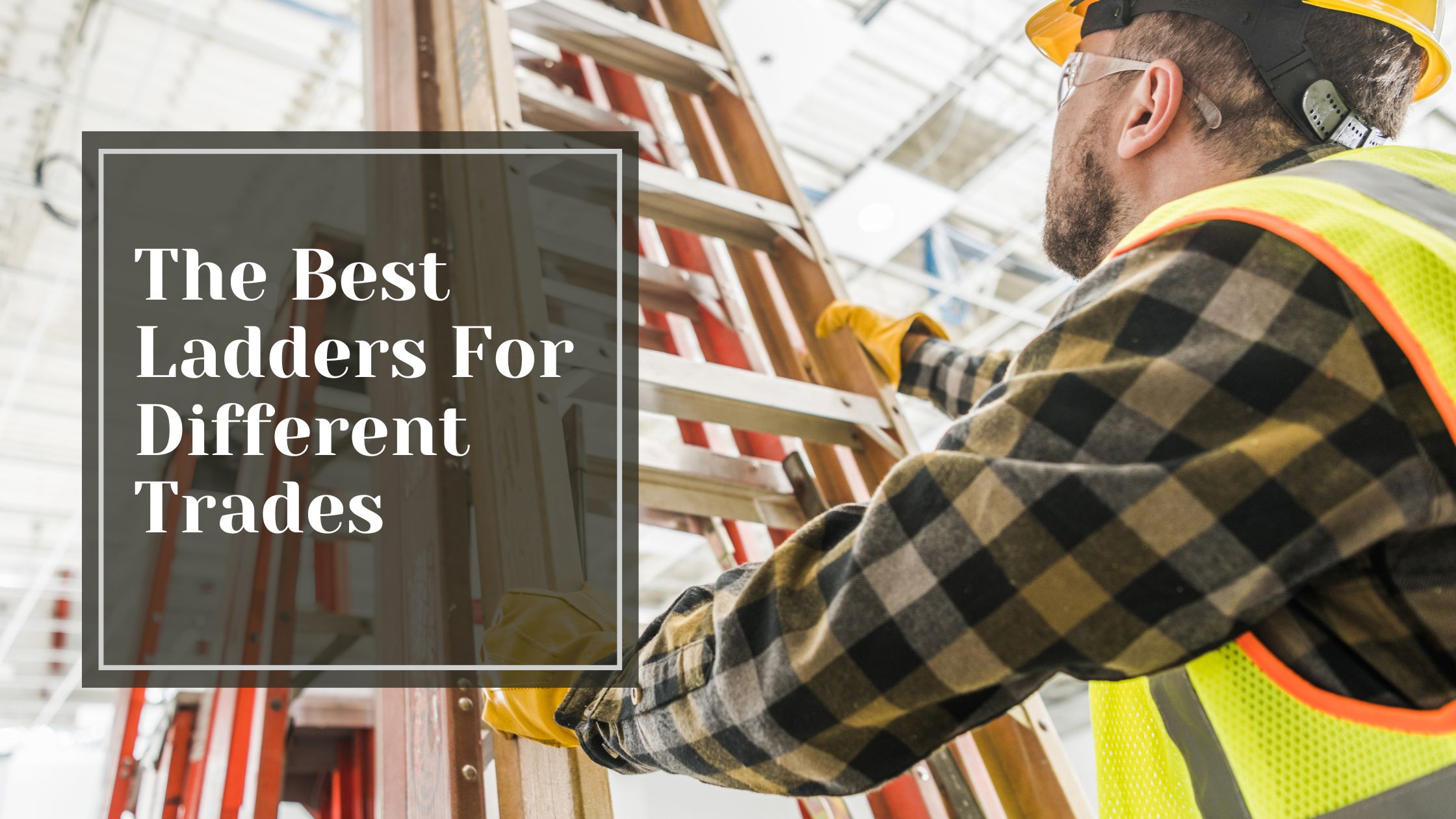As cities grow and green spaces become scarcer, architects and designers look to rooftops as an opportunity to incorporate natural elements into urban environments. Green roofing and rooftop gardens are an effective, beautiful solution and the latest trend in urban landscaping. They offer a range of benefits, from improved air quality to reduced energy consumption.
Table of Contents
ToggleWhat is Green Roofing?
Green roofing involves covering the roof of a building with vegetation, which can range from low-lying plants to full-scale gardens. This technique has been used for centuries, with some of the earliest examples dating back to Viking settlements in Scandinavia.
Contemporary styles expanded in the 1980s with three main categories to standardize green roofs: Extensive, Semi-Intensive, and Intensive. These categories have been accepted worldwide, making more frequent appearances in cities all over.
Extensive Green Roofing
Extensive green roofs are lightweight and require relatively little maintenance, with typically no need for additional watering – barring a drought. They conventionally have a low layer of vegetation, such as grass or ground cover species like moss, sedum, or flower.
Intensive
Intensive rooftop landscapes are engineered to support more extensive vegetation, such as bushes and trees. They require much more soil and often irrigation to keep this vegetation type. Additionally, the building must be able to support the weight. Rooftop parks and gardens are commonly classified as intensive.
Semi-Intensive
A popular hybrid option between the two, semi-intensive (sometimes called semi-extensive) green roofs offer designs that support “medium” weight vegetation and soil substrates. They cannot support trees, but shrubs and small gardens are typical for this type of green roof. Semi-intensive roofs typically require moderate maintenance and irrigation.
Why Go for Green Roofing?
Environmental
The benefits of rooftop landscaping are many. By absorbing and storing rainwater, green roofs can reduce stormwater runoff, which can cause erosion and pollution in urban waterways. They also improve air quality by absorbing pollutants and carbon dioxide and releasing oxygen into the atmosphere. Furthermore, they can also reduce energy consumption by providing insulation in the winter and shading in the summer, reducing the need for heating and cooling.
In recent years, green roofing has become increasingly popular in urban areas to combat the urban heat island effect, which causes cities to be hotter than surrounding rural areas. These urban green spaces have proven beneficial for pollinating species such as bees. Additionally, green roofing positively impacts local biodiversity by providing new habitats for plants and animals – supporting local ecosystems in a big way. This is particularly important as urbanization and development continue encroaching on natural habitats and threatening biodiversity.
Production
Rooftop gardens are a form of green roofing that has recently gained much popularity. These gardens offer many of the same benefits, including edible produce. They can range from small containers of herbs and flowers to full-scale vegetable gardens that produce fresh produce for residents and restaurants. They also allow urban residents to connect with nature and enjoy the benefits of gardening, even in dense urban environments.
Value
Complementary to their environmental, aesthetic, and health benefits, green roofs can significantly increase the value of a building. Studies have shown that green roofs can improve the lifespan two to even three times, reducing the need for costly repairs and replacements. They can also increase the value of a property by improving its energy efficiency and visual appeal. All in all, green roofs are a major selling point.
Including these urban green spaces provides much-needed access to a natural environment for local populations. Parks and gardens have a profoundly positive impact on the physical and mental health of city dwellers. Utilizing rooftops provides much more room for green spaces – helping to prove that just because you live in a city doesn’t mean you can’t access the beauty of nature!
Green Roofs in Action
One of the most famous examples of rooftop gardening is the High Line in New York City. This 1.5-mile elevated park was built on a former rail line and features gardens, art installations, and stunning city skyline views. The High Line has become a popular destination for locals and tourists alike and has been credited with revitalizing the surrounding neighborhood.
Important Considerations of Green Roofing
General Obstacles
Despite the many benefits of rooftop landscaping and gardens, their implementation has some challenges. The upfront cost of installing a green roof can be noticeably higher than traditional roofing materials, although the long-term benefits often outweigh the initial investment. Maintenance for these green roofs can also be challenging, as access to water, labor, and soil may be limited. However, many designers and architects have found creative solutions to these challenges, such as using lightweight soil and irrigation systems that capture and reuse rainwater.
Structure
One of the most important factors when designing a green roof or rooftop garden is ensuring that the structure of the building can support the weight of the vegetation and soil. This is particularly important for more extensive rooftop gardens or parks, which can require significant amounts of soil and water. Structural engineers and architects work closely with landscapers to ensure that the building can support the vegetation’s weight while meeting safety and building code requirements.
Vegetation
Another important consideration when designing a green roof or rooftop garden is selecting appropriate vegetation. Plants must survive in the harsh rooftop environment, which can be hotter, windier, and dryer than traditional gardens. Low-lying sedums are popular for green roofs, as they require minimal soil and water and can tolerate extreme temperatures. For rooftop gardens, designers often choose plants well suited to container gardening, such as herbs, small fruits, and vegetables.
What is Green Roofing
As the trend towards green roofing grows, we can expect to see more innovative designs and techniques for incorporating nature into urban environments. From small container gardens to full-scale rooftop parks, green roofs offer a range of benefits for both the environment and the people who live and work in urban areas. By embracing these trends and incorporating natural elements into urban environments, we can create healthier, more sustainable cities that are more beautiful, resilient, and connected to the natural world.

